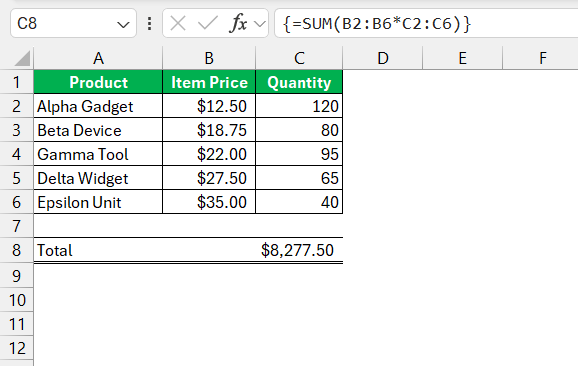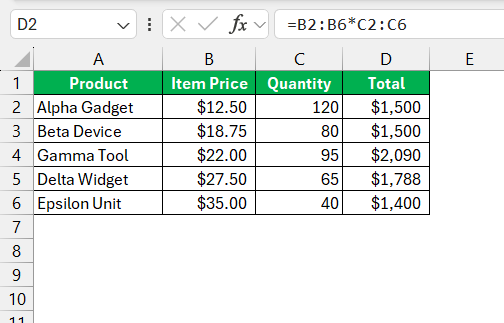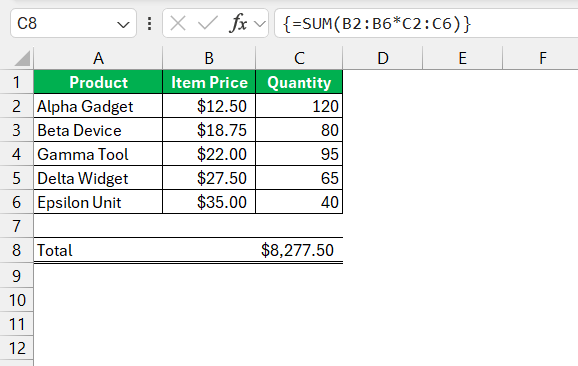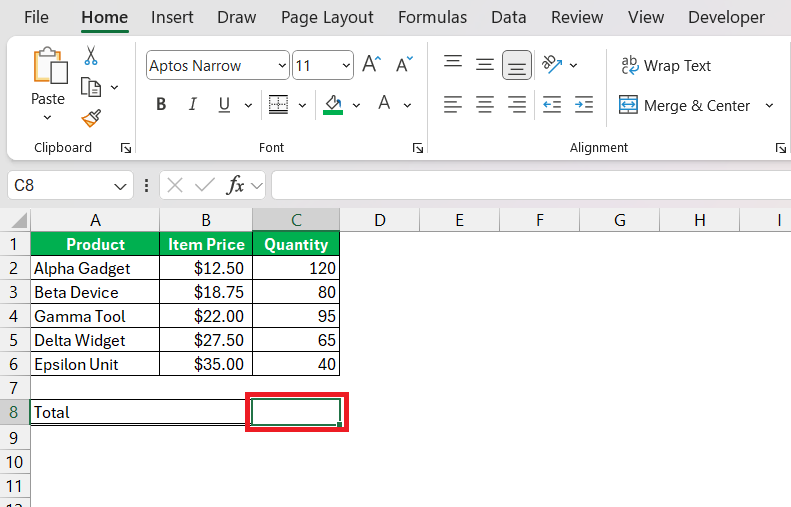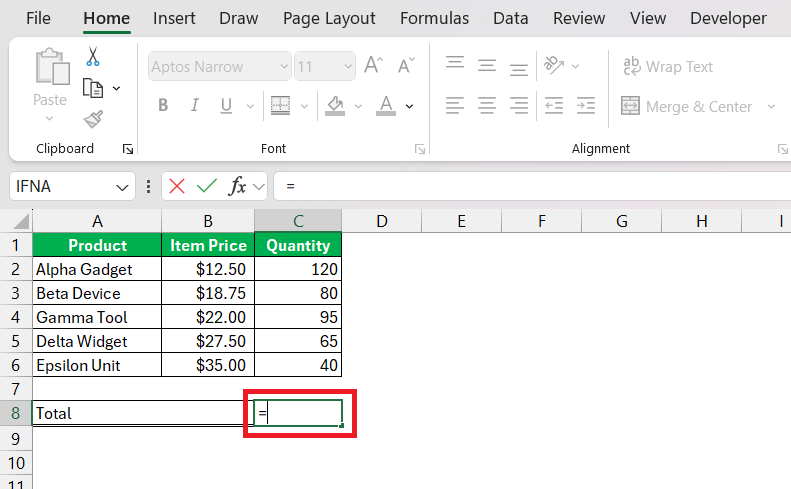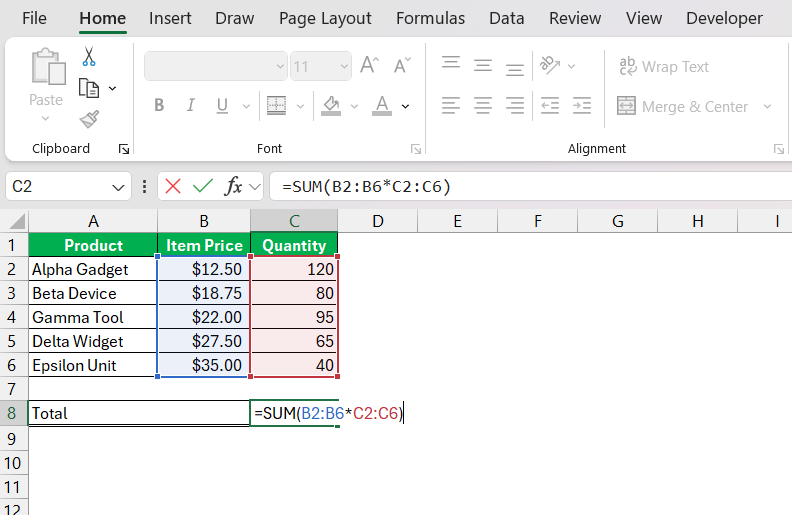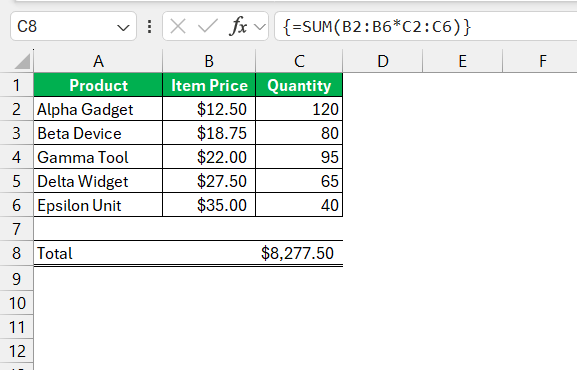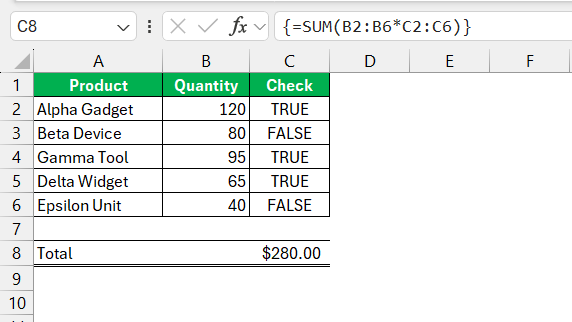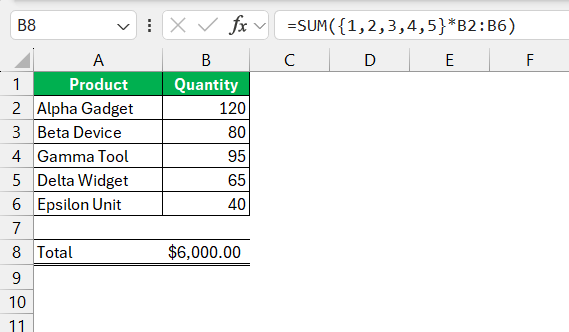Array formulas in Excel are a feature I find incredibly powerful. They allow me to perform complex calculations with a single formula, saving me time and effort. These formulas can handle multiple values in one or more arrays (ranges of cells) and can return either a single result or multiple results based on the input range. Here’s how I use and understand array formulas in Excel.
Key Takeaways:
- Array Formulas Streamline Complex Calculations: They handle multiple values at once, making it easier to perform intricate calculations with a single formula, saving time and effort.
- Single-Cell vs. Multi-Cell Formulas: Single-cell array formulas provide one result from multiple data points, while multi-cell formulas yield results in multiple cells, enhancing data analysis and presentation.
- Understanding Array Formula Components: An array formula consists of an array, a function or operation, and in older versions of Excel, requires the CTRL + SHIFT + ENTER keystroke to activate.
- Efficient Data Transformation: Array formulas enable simultaneous operations across data points, revealing trends and patterns that might be hidden in raw data.
- Troubleshooting and Optimization: Handle errors using functions like IFERROR, validate data types, and ensure correct range selection to avoid common issues with array formulas.
Table of Contents
Unveiling the Magic of Array Formulas in Excel
What is the Array Formula?
With array formulas, you’re stepping into an area of Excel that combines the power of mathematics with the capability to handle bulk data effortlessly. Unlike standard formulas, arrays can process a multitude of values simultaneously, making them especially beneficial when crunching numbers across large datasets.
Imagine having a Swiss Army knife in your Excel toolkit; that’s precisely what array formulas offer – versatility and efficiency.
Single-cell vs Multi-cell Array Formulas: Understanding the Difference
Single-cell array formulas are the go-to when you need to perform operations on multiple data sets and desire a single outcome. Picture yourself needing to find the average of numerous cells—it’s this kind of scenario where a single-cell array works wonders.
{=SUM(B2:B6*C2:C6)}
Switching gears, multi-cell array formulas shine when you’re eyeing multiple results from your data manipulations. If you’re calculating sums for every row in a spreadsheet, a multi-cell array formula elegantly and efficiently gives you individual totals all in one swoop. They can transform how you handle complex data puzzles, offering clarity and concise results where it might otherwise seem daunting.
=B2:B6*C2:C6
Starting with the Basics: What Are Array Formulas?
The Anatomy of an Array Formula
Peek under the hood of an array formula, and you’ll discover its core consists of three integral components: the array itself, a function or operation that crunches the data, and, in pre-Excel 365 versions, the keystroke combo that brings it to life—Control + Shift + Enter (CSE). The array could be a range of cells you’re analyzing, the function might be a SUM or AVERAGE, and the CSE combo is the spark that makes the formula compute over the array.
An example might look like {=SUM(B2:B6*C2:C6)}, where Excel multiplies corresponding values from two columns before summing them up.
Remember that the curly braces are not manually typed but signify that you’ve activated the mystical array formula realm via CSE—except in Excel 365, where they’re part of standard functionality.
Movements Through Data Transformation with Arrays
Array formulas are like data alchemists, masterfully transforming rows of raw information into insightful golden nuggets. They work their magic by performing simultaneous operations across multiple data points, unearthing trends and patterns that were not immediately obvious.
For instance, say you’re looking at sales data and want to see how monthly sales figures compare against the annual average. An array formula can subtract each month’s sales from the annual average in one seamless motion across the whole data set, spotlighting months that performed above or below par. This allows you to navigate through your data’s transformation journey, from a simple spreadsheet to a treasure trove of insights.
Constructing Your First Array Formula
Step-by-Step Entry Method for Array Formulas
Stepping into array formulas might seem tricky at first, but with these steps, you’ll unlock their potential with ease:
STEP 1: Click on the cell where you want your answer to appear.
STEP 2: Into the formula bar, type your equation, beginning with an = sign.
STEP 3: Choose your desired operation or function from the formulas tab. If opting for a function like SUM, a dialog box will appear where you can define the range of cells to include.
STEP 4: Instead of hitting Enter alone, complete the sequence with CTRL+SHIFT+ENTER.
Voilà! Your array formula is now active. Just remember, if you need to tinker with the formula, pressing these keys again is a must to reaffirm the array.
Empowering Calculations: Tips and Tricks
Dive into array formulas, and you’ll find they can significantly amplify your calculation capabilities. To help you harness their full potential, consider these empowering tips and tricks:
- Use Named Ranges: Make your formulas easier to understand by using named ranges within your arrays. By giving a meaningful name to a range of cells, your formulas become more readable, and you save time.
- Array Enter for Efficiency: Remember that pressing CTRL+SHIFT+ENTER may seem like extra steps, but it activates the power of your array formula. In newer Excel versions, just pressing ENTER should suffice.
- Leverage the IF Function: Combine IF with array formulas to perform conditional calculations across an array of data, effortlessly filtering and analyzing as needed.
- Embrace Boolean Logic: Array formulas can incorporate Boolean logic (TRUE/FALSE) to perform multiple comparisons within one formula. This can simplify complex conditions.
- Array Constants: Use array constants when you need fixed values within your formulas. They’re entered like this:
{1,2,3,4,5}, saving time and keeping your workbook clutter-free.
Above all, ensure your data is clean and neatly structured to make the most of array formulas. Having consistent data without stray values or mismatched types is half the battle when working with arrays.
Tackling Common Hurdles in Array Formula Usage
Handling Errors Gracefully in Complex Formulas
Navigating through complex Excel formulas can occasionally lead you into a maze of errors. However, with a keen eye and a bit of know-how, you can handle these gracefully. First off, familiarize yourself with Excel’s range of error values, such as #VALUE!, #REF!, and #DIV/0!, as they’re your clues for troubleshooting.
Here are some pointers to keep your sail smooth:
- Use Error-Handling Functions: Functions like IFERROR and IFNA come to the rescue by allowing you to gracefully handle errors, often by providing alternative results or clear error messages.
- Validate Data Types: Ensure input data types align with what your formula expects. Mismatched data types often result in confusing errors.
- Break Down Formulas: If a complex formula throws an error, dissect it into smaller parts to isolate the issue. This can help you find and fix the problem with less hassle.
- Ensure Correct Range Selection: For multi-cell array formulas, I need to ensure the output range is correctly selected before entering the formula.
- Array Size Mismatch: I check if the dimensions of the arrays or ranges are compatible. For example, if I’m using
MMULT, the number of columns in the first matrix must match the number of rows in the second matrix.
Handling errors with tact not only maintains the integrity of your data analysis but also paints you as an Excel connoisseur in the eyes of your peers.
FAQs: Overcoming Array Formula Confusion
How do you use an array formula in Excel?
To use an array formula in Excel, input your formula in the cell where you want the result, then press CTRL+SHIFT+ENTER if you’re using a version prior to Excel 365. In Excel 365 and later, just hit ENTER. Excel will then process the formula over the entire range of selected cells, treating them as a single entity.
Why use array formulas in Excel?
Array formulas in Excel are incredibly versatile, allowing you to perform complex calculations across large data sets with relative ease. They’re ideal for tasks that require summarizing or transforming multiple data values simultaneously, greatly simplifying your data analysis and saving you significant time.
How Do I Correctly Enter an Array Formula in Excel?
Enter an array formula in Excel by typing your desired formula in the cell, then press CTRL+SHIFT+ENTER together to confirm it. This keystroke applies to older Excel versions; newer ones automatically treat entered formulas as arrays when necessary, requiring only the ENTER key.
Can I Perform Different Calculations Within a Single Array Formula?
Yes, you can perform various calculations within a single array formula. This allows you to combine multiple operations and functions, handling intricate calculations in one go, thus streamlining complex data manipulation tasks.
What Should I Do If My Array Formula Slows Down Excel Performance?
If an array formula is slowing down Excel, try optimizing it by reducing the range of cells it covers, or breaking it into simpler, smaller formulas. Consider also using alternative functions or features such as PivotTables or Power Query for better performance.
John Michaloudis is a former accountant and finance analyst at General Electric, a Microsoft MVP since 2020, an Amazon #1 bestselling author of 4 Microsoft Excel books and teacher of Microsoft Excel & Office over at his flagship MyExcelOnline Academy Online Course.

